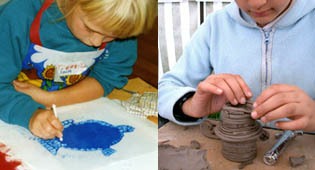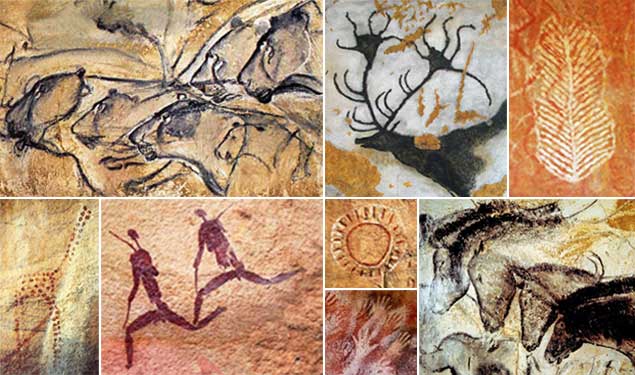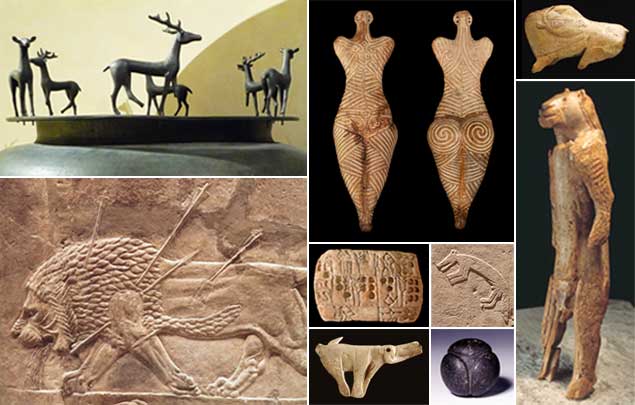











a historical perspective
Art and decoration
The development of art and technology is a fundamental part of this story, but it is often seen as a mysterious wonder -
In their recent 'History of the World' BBC Radio 4 programme series, (publ. 2011), Neal Macgregor (Director of the British Museum), David Attenborough and Prof. Steven Mithen discuss these ideas in a new way, by looking at 100 objects from the collection at the British Museum:
"...we have looked at stone tools, from approx. 2 million years ago, and this raised the question on whether it is making ‘things’ that makes us human -
"Our modern human species, 'homo sapiens' ('thinking man' in the Latin), evolved in Africa at least 150,000 years ago. But around 50,000 years ago, something dramatic seems to have happened to the human brain. Across the world, humans started to make patterns that decorate and intrigue, to make jewellery to adorn the body, and representations of the animals that shared their world. They were making objects that were less about physically changing the world than about exploring the order and the patterns that can be seen in it. In short, they were making art.
Why? Why do all modern humans share the compulsion to make works of art? Why does man the toolmaker everywhere turn into man the artist?"
resource link > Niel MacGregor: History of the world in 100 objects

cave paintings expressing early imagination and a sense of design & beauty
Nigel Spivey, in his book and BBC TV series 'How Art Made The World' (publ. 2005), also makes a distinction between art and craft in human development. Tool making is a craft evolved out of practical necessity, but decoration, sculptural and visual art arises from imagination.
He says:
"Periodically, evidence arises to indicate that human agency in making marks or patterns is older than we think -
"…The human production of art may be full of craft and decorative intent, but above all, and definitively, the art of humans consists in our singular capacity to use our imaginations… this capacity for visual symbolising arrived at a certain stage of our prehistoric evolution…" "When was it that we combined the dexterity of our hands with the power of our brains and learnt the knack of representation?"

realism, symbolism and abstract styles were all created at least 7,000 -
what do we mean -
• there is special knowledge and understanding to be gained by making things
• childhood plays a vital part in this innovative process
a historical perspective
• observation, trial and error
• origins of maths
• patterns and geometry
facing the future
growing concerns
• Neil MacGregor
• Sherry Turkle
• Seymour Papert